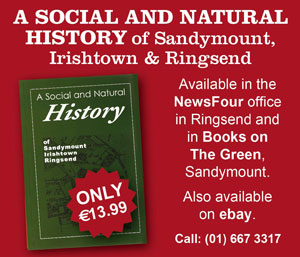
Eoin Meegan
It was like saying goodbye to a very dear friend. That was how many of the parishioners of St Mary’s church, Donnybrook, on the corner of Anglesea Road and Simmonscourt Road, felt following the ceremony of deconsecration when their church closed its doors for the last time.
Like so many other churches around Ireland in recent years, St Mary’s had seen a fall in attendances. This, coupled with structural instability in the actual building itself meant that the writing was on the wall for this venerable place of worship. So, the decision was regrettably taken by the Select Vestry of the Church of Ireland earlier this year to end all services there and have the church deconsecrated.
The event took place on Friday July 3rd, last and was performed by the Archbishop of Dublin Michael Jack-son. Also taking part were the Reverend John Marchant (Rector), Diocesan and Provincial Registrar the Reverend Stephen Farrell, and the Venerable Neal O’Raw, Archdeacon of Glendalough.
Recalling the sadness of the occasion Dr Jackson said: “On this day, which is a particularly poignant and sad day when we say goodbye to this church as a place of worship, we give thanks to God for faith in God. It is a gift we take with us, like all of those who have worshiped here.” The archbishop also recalled a local woman, Elizabeth Ferrar, who attended the missions in India in the 1930s, and many more who passed through the church.
He spoke too of St Thomas, on whose feast it was, and of how to doubt is a very human trait, a sentiment I’m sure everyone can resonate with. For no matter how courageous we might want to be we all experience fear and doubt at some time, whether it be at a time of personal crisis, or, like now when we find ourselves living through the uncertainty of a pandemic. Just to keep going in the face of these fears and doubts, and to believe in something greater than ourselves, is in itself an act of faith.
The Reverend Marchant has faithfully served both St Mary’s, and St Mathew’s of Irishtown as Bishop’s Cu-rate since 2014, and will still continue as Vicar of St Mathew’s. He will sadly miss services in St Mary’s, especially on big occasions such as Christmas and Easter. What will become of the building now? Who knows, like so many unused churches it may end up as another office block.
The church sits in a tranquil setting facing onto Merrion Cricket ground, with Bective and the village in the distance, and the RDS just to its left. It could almost be mistaken for a rural setting, and a stranger arriving there would not think they were only 15 minutes from the bustling city centre. The building itself is physically striking, neo-Gothic in style, with ornate mini conical spires running along each side and over the entrances.
The original edifice was by John Semple, with the transepts, chancel and vestry added by Joseph Welland in 1859; the organ chamber by J.F. Fuller, being a later addition in 1906. To its right stands a large celtic cross primarily commemorating those who died in the First World War, but also including names from WW2 and the Crimean war.
St Mary’s can trace its history back to 1827 when the foundation stone was laid. The building opened to the public three years later. The church replaced an older one, also called St Mary’s, that went all the way back to the 12th century and stood in the ancient cemetery in Donnybrook village. At the time worshippers must have been very excited about moving to the new, modern church. And so all things come full circle.
The service was a solemn occasion and was attended by parishioners from the joint parishes of Donnybrook and Irishtown. Everyone came to say their last good-byes. When the service came to an end, the Act of Deconsecration was read. It was like the passing of an era, and for many of the parishioners of Mary’s it brought sad memories and a tear to the eye.



